Biology
1/104
Earn XP
Description and Tags
Cells, DNA And Synthesis, Energy, Evolution and Natural Selection Inheritance, Biotechnology
Name | Mastery | Learn | Test | Matching | Spaced |
|---|
No study sessions yet.
105 Terms
CELL PLASMA/MEMBRANE
Surrounds cells and organelles. Controls the entry and exit of substances from one area to another.
The plasma membrane provides an active boundary. Some but not all substances are allowed into the cell. A barrier that is constantly changing and responding to the environment.

FLUID MOSAIC MODEL
Components of the Plasma Membrane
Phospholipid bilayer (Fluid, as can stretch and contract)
Hydophobic tails face each other, creating an area that is hydrophobic
Hydophillic heads face outwards
Proteins (Mosaic)
Embedded in the phospholipid bilayer
Can move throughout the membrane
3. Cholesterol
Provides flexibility to the membrane
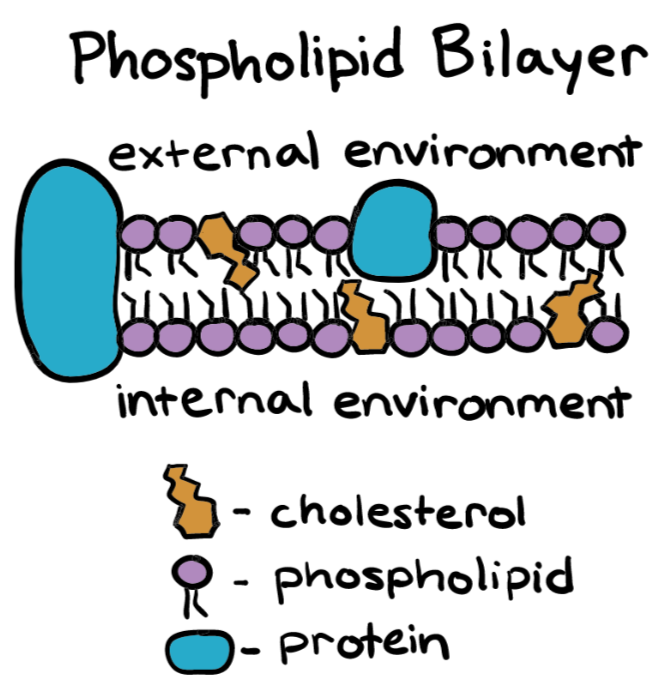
Roles of Proteins in the Plasma Membrane
Transport
Trans-membrane proteins help substances cross the plasma membrane
Reception
Receptors for signalling molecules
Anchorage
Connect intracellular cytoskeleton to extracellular matrix
Cell identity
Mark cells and ‘self’
Intercellular joinings
Join cells together and allow communication between cells
Enzymatic activity
Allow reactions to occur
Function of the Plasma Membrane
The plasma membrane provides an active boundary. Some but not all substances are allowed into the cell. A barrier that is constantly changing and responding to the environment.
CELL WALL
F: protect and maintain the shape of the cell and helps the cell withstand the water turgor (pressure) of the cell.
Found in plant, algae, fungi, bacteria and archaea cells

SEMIPERMEABLE
Selectively Permeable
Allows some substances to cross but prevents the passage of others.
MOLECULES THAT CAN CROSS MEMBRANE
Small nonpolar molecules like oxygen (O₂) and carbon dioxide (CO₂), and small polar but uncharged molecules like water (H₂O) and ethanol
CYTOPLASM
F: To support and suspend organelles and cellular molecules. Many cellular processes also occur in the cytoplasm
MCC: made up of the cytosol and other organic and inorganic compounds
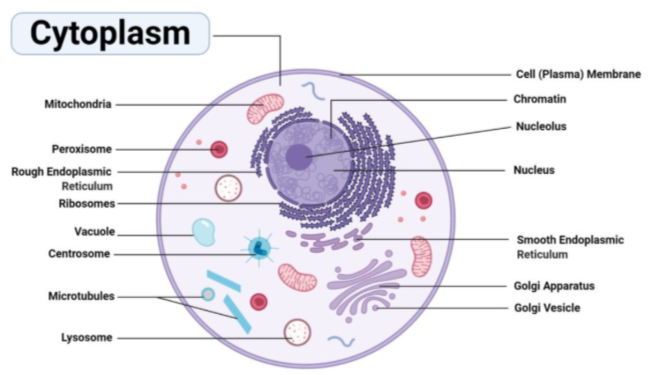
NUCLEUS
F: coordinates the activities of the cell
MCC: Nucleic Acid - Deoxyribonucleic acid (DNA)

CYTOSOL
F: helps in the distribution of various nutrients and facilitates the movement of cell organelles and reactions within the cell.
MCC: It is colourless and has about 90% water along with various nutrients required for the cell.
MITOCHONDRIA
F: Cellular respiration - conversion of glucose into ATP
MCC: Carbohydrate – glucose

VACUOLE
F: Storage of water, nutrients, pigments, and waste products. Development of turgor pressure

CHLOROPLAST
F: Site of photosynthesis Conversion of sunlight energy to store in glucose
Contain chlorophyll and other pigments
MCC: Carbohydrate – glucose
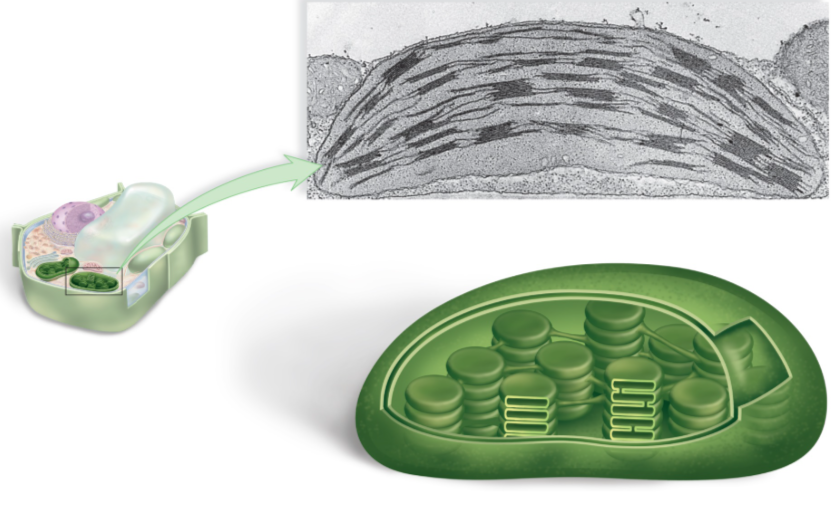
RIBOSOMES
F: Site for protein synthesis.
MCC: proteins

ENDOPLASMIC RETICULUM
F:
- SER (smooth): production of hormones and other secretory products
- RER (rough): collect and transport proteins to the Golgi body. RER have attached Ribosomes, where proteins are synthesised (Rough=Ribosome)
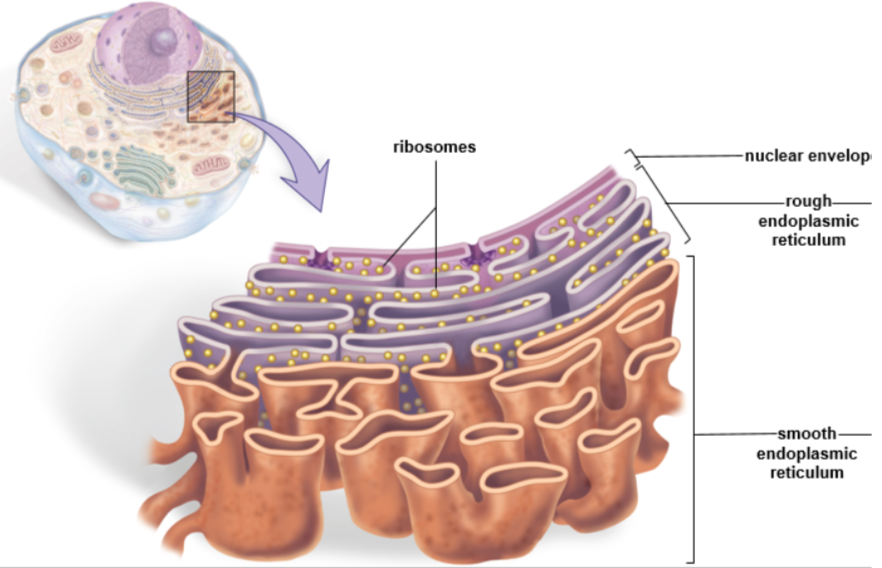
GOLGI BODY
F: processing, modifying, sorting, packaging and release of different macromolecules into vesicles (e.g. proteins, carbohydrates, enzymes)
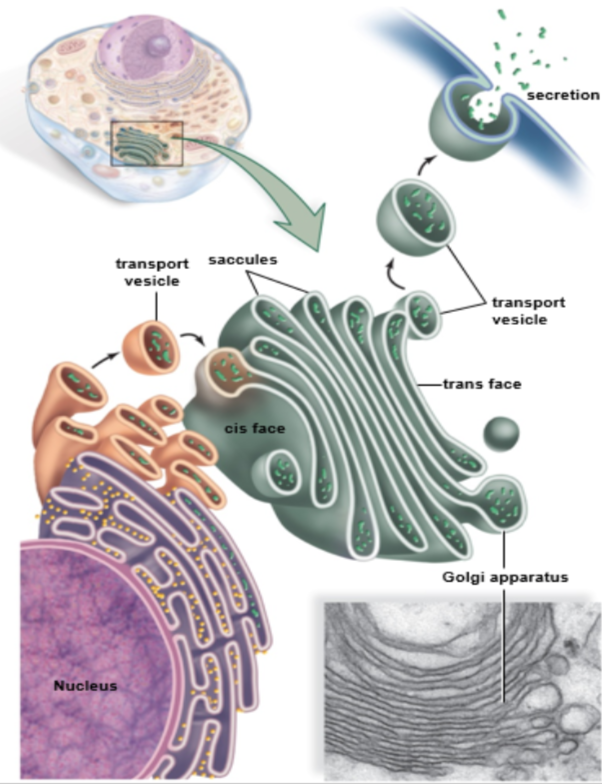
VESICLES
F: Transport and storage of macromolecules within cells and out of cells.
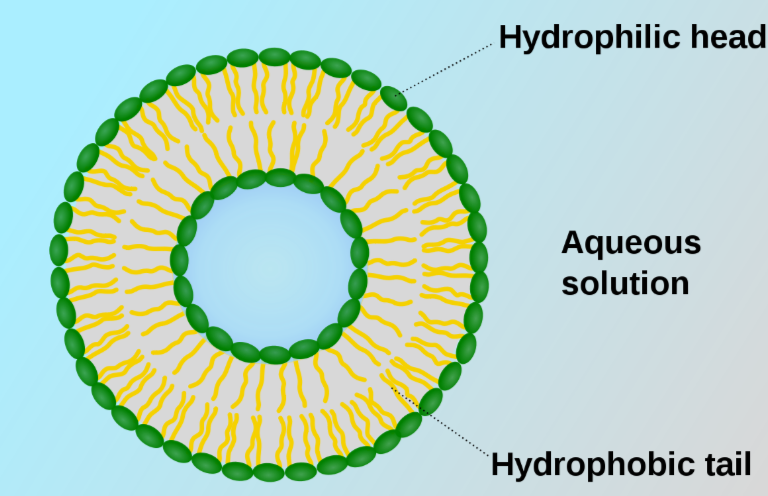
COMPARE PLANTS VS ANIMAL CELLS
Plant cells possess a rigid cell wall, chloroplasts for photosynthesis, and a large central vacuole for turgor pressure, while animal cells have centrioles, lysosomes, and a flexible cell membrane
Basic components of a cell
The basic structural and functional units of every organism
All cells:
Are bound by a plasma membrane
Contain cytosol
Contain chromosomes
Contain ribosomes
DISTINGUISH BETWEEN PROKARYOTIC AND EUKARYOTIC CELLS?
Prokaryotic cells are small and simple, without a nucleus or organelles. Eukaryotic cells are larger, with a nucleus and membrane-bound organelles.
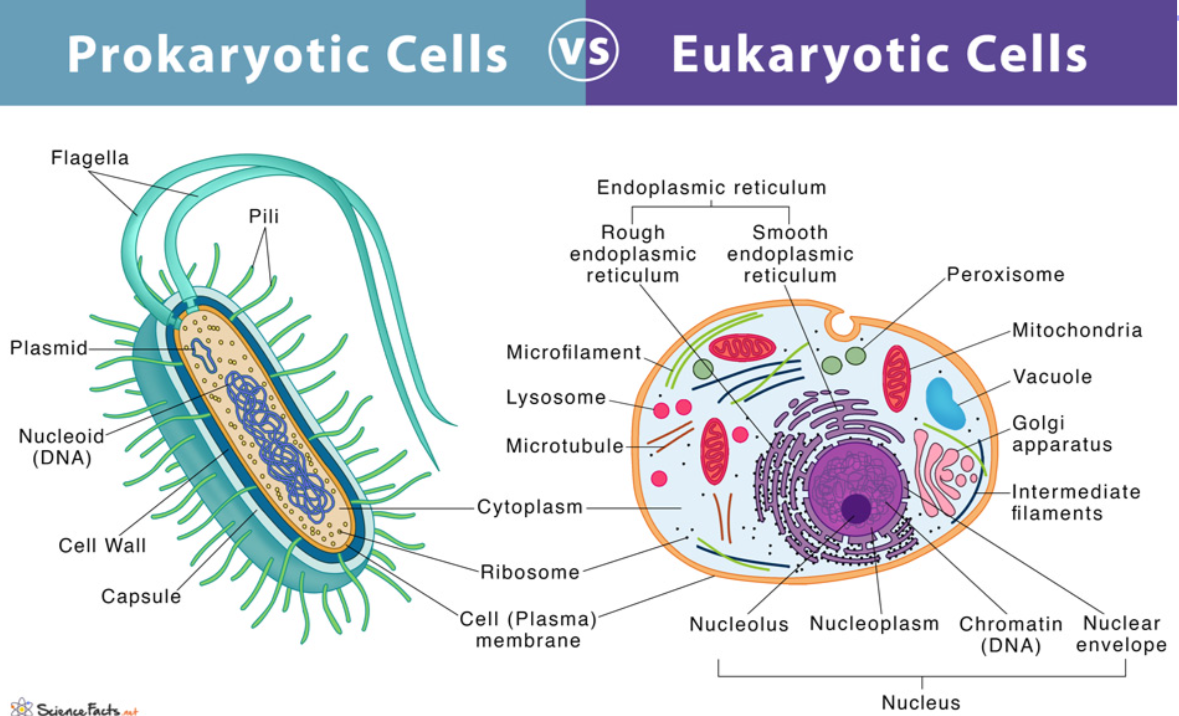
Membrane bound organelles
is an organelle that is surrounded by a phospholipid bilayer
WHAT IS DNA?
stands for Deoxyribonucleic acid.
controls the genetic make up of an organism.
is a polymer of nucleotides.
A nucleotide is made up of a phosphate group, a sugar and a nitrogenous base

WHAT ARE THE PARTS OF THE DNA MOLECULE?
is in a double helix shape
two main parts to double helix - the “backbone” and the “stairs” of the ladder.
“backbone” made up of sugar and phosphate ‘‘stairs” made of nitrogenous bases
COMPLEMENTARY BASE PAIRS
Adenine binds with Thymine, Cytosine binds with Guanine
are bound by hydrogen bonds
How does DNA control what is happening in the cell?
The structures and functions of the cell are controlled by the process of gene expression.
Gene expression involves 2 steps
Transcription where DNA is used as a template to make mRNA (messenger Ribonucleic acid)
And
2. Translation where the mRNA is used to make a polypeptide (amino acid) chain which will fold to make a protein. These proteins control the processes and make up the structures of the cell
WHAT IS TRANSCRIPTION AND TRANSLATION?
Transcription and translation are the processes that all living things use to read the information in DNA and build proteins. Each gene in a cell’s DNA codes for a specific protein.
WHAT HAPPENS DURING TRANSCRIPTION AND TRANSLATION?
During transcription cells make a copy of a gene out of mRNA. During translation they use that mRNA copy as a blueprint to build proteins out of amino acids. These proteins perform the tasks that make living things function.
TRANSCRIPTION - DNA TO mRNA
Inside the nucleus RNA polymerase attaches to a gene. It separates the two complimentary DNA strands, exposing the genes unique sequence of bases.
An RNA copy of the gene is made by matching base pairs. Remember that C-G & A-U
When the end of the gene is reached, transcription is complete. The new strand of mRNA passes out of the nucleus and into the cytoplasm where translation takes place.
TRANSLATION - mRNA TO PROTEINS
The instructions in an mRNA strand are read in groups of three bases called codons.
Each codon must be translated one after another in order to build a functioning new protein.
The key structures in that process are the ribosome and transfer RNA (tRNA).
Each tRNA molecule has it’s own anticodon and a matching amino acid – the building blocks of proteins.
To begin translation a tRNA molecule, coded for the amino acid Methionine docks with the ribosome.
The ribosome attaches to the end of the mRNA strand.
It slides along until it finds a START codon AUG.
Through complimentary base pairing the start codon pairs with the anticodon on the tRNA molecule, signalling the beginning of the protein instructions.
The first protein is attached and the ribosome shifts to read the next codon. Each codon is recognised by one of the 20 different tRNA molecules. Each type of tRNA carries a different amino acid.
The ribosome adds each amino acid in the correct order to make the protein.
The sequence of the amino acids determines the final shape of the protein and the function that it will carry out.
WRITE mRNA FROM DNA
To write an mRNA sequence from DNA, use the template strand (3' to 5') and match RNA bases: A → U, T → A, C → G, G → C.
Restriction Enzymes (ENDONUCLEASES)
cut DNA into pieces so that the DNA is easier to work with.
are found naturally in bacterial cells.
They recognise specific DNA sequences and cut the DNA in these places ONLY.
When used produce ends of DNA known as “sticky” or “blunt” ends.
Each enzyme has its own unique sequence that it recognises – known as recognition sequences or sites. These sites are palindromes meaning that both strands of DNA will have the same sequence when read 5’ to 3’
Restriction enzymes are named for the bacteria they come from and the order in which they were discovered.
Ligase enzymes
Ligases are used to join segments of DNA together. They help the bonds form between the sugar and phosphate groups in the DNA sequence
What do you do with the DNA now it is cut?
DNA can now be inserted into another organism or piece of DNA.
This is done by also cutting the acceptor DNA with the same restriction enzymes so that the cuts match.
Gel electrophoresis
The DNA sample with fragments of varying sizes is combined with DNA loading dye.
This mixture is placed in a well at one end of a slab of an agarose gel.
This agarose gel is immersed in a buffer solution (salt solution).
The gel is then exposed to an electric field with the positive (+) pole (anode) at the far end and the negative (−) pole (cathode) at the starting origin. The DNA is attracted to the positive pole (as DNA is negatively charged).
Smaller fragments move through the agarose gel faster compared to larger fragments.
These fragments appear as bands on a gel which can be interpreted in various ways. This usually needs to be observed under UV light.
Once the gel run is complete, the separated DNA bands must be made visible either through the use of a dye or a labelled probe (that binds to a target sequence)
A standard ladder of DNA fragments of known sizes is usually run through the gel at the same time as the unknown DNA samples.
Polymerase Chain Reaction (PCR)
used to amplify copies of DNA
involves denaturing DNA, adding essential ingredients to the mix and then annealing the DNA.
Step 1: Denature
sample needs to be separated into two separate strands.
happens by raising the temperature of the PCR mixture, causing the hydrogen bonds between the DNA strands to break
occurs at 95 °C for one minute.
Step 2: Anneal
Short segments of single-stranded DNA, known as primers (forward and reverse sequences), are added.
Primers bind to the target DNA sequences and initiate DNA synthesis. These primers can bind to their complementary sequences on the single-stranded template DNA.
occurs between 50-60°C for two minutes.
Step 3: Extend
The polymerase enzyme (Taq polymerase) uses the primers as a starting point and extending the primers, synthesising the new strands of DNA by adding nucleotides.
A supply of ‘free’ nucleotides must be available in order for the DNA polymerase to create a new strand of complementary DNA.
occurs at 72 °C for one minute
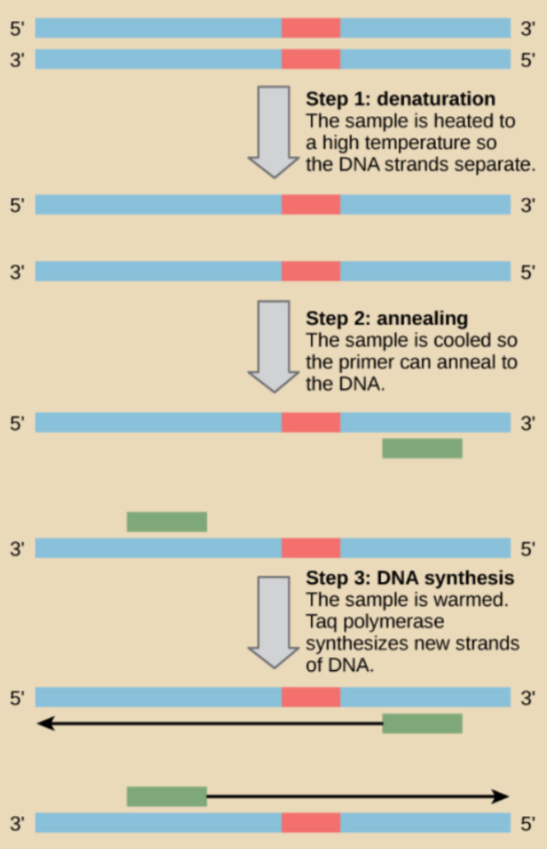
Gene cloning
involves placing a whole gene into bacterial cell’s plasmids.
allowing for a cell to essentially over produce a particular product.
Insulin, human growth hormone and haemoglobin are produced this way.
Recombinant plasmid
The DNA of the plasmid is cut using a specific cutting enzyme (endonuclease) in order to create sticky ends. This changes the plasmid from circular to linear.
The target gene is prepared using the same endonuclease so that the target gene has the same sticky ends.
The target gene and the plasmids are mixed, and, in some cases, their ‘sticky ends’ pair.
(Other pairings will also occur, such as cut plasmids resealing themselves so that they are not recombinant plasmids).Ligase is added to permanently bond the target gene and plasmid
Once recombinant plasmids have been created, the challenge is to transfer them into bacterial cells. This process is known as bacterial transformation
Sometimes the gene is not incorporated in the plasmid or the plasmid is not taken up by the bacteria.
We then use the antibiotic resistance gene as a method of selecting for transformed bacteria.
Whole organism cloning
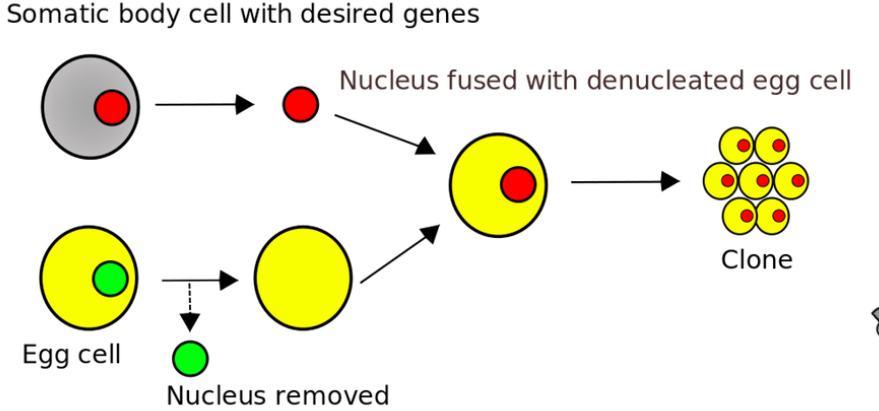
Genetics
The study of inheritance of traits and the patterns that you see within groups of organisms
What is a genome?
The genome is the sum total of the genes present in a cell or organism
Expressed as the base sequence of the haploid set of chromosomes
The field of study of genomes is genomics
Gene Function
A gene is the inherited instruction carried on a chromosome
Most genes code for the production of specific proteins (via transcription and translation)
Alleles
A gene that controls one function can exist in different forms or variants called alleles
One gene can have several alleles
For example, the gene for eye colour has alleles that encode different shades / pigments
As alleles are alternative forms of the one gene, they possess very similar gene sequences
Alleles only differ from each other by one or a few bases
What controls traits?
Traits (characteristics such as hair colour, height, rolling your tongue, blood type, etc.) are controlled by GENES.
The set of genes that an organism inherits from its parents is called the genotype. For each trait an organism inherits two alleles, one from mum (the maternal allele) and one from dad (the paternal allele).
How the trait is observed is known as the phenotype.
Genotype
This is the alleles that an individual has for a trait. It is represented by two letters.
phenotype
The trait that you see
The phenotype can be influenced by factors other than the genotype such as the environment.
Complete dominance
A genotype that has two letters the same is known as homozygous (BB or bb) and one that has two different letters is known as heterozygous.
In a trait where there is only discrete phenotypes (e.g. black or brown) and where one allele “covers up” the effect of the other, it is known as COMPLETE DOMINANCE. The heterozygote shows the dominant allele.
Dominant vs Recessive
Dominant alleles show their effect (phenotype), even if the individual has only one copy (homozygous or heterozygous)
Recessive alleles only show their effect (phenotype) if the individual has 2 copies of the allele (homozygous)
Punnett Squares
These are an organised way of working out what the possible offspring of a cross is.
They show the probability of producing certain genotypes and phenotypes in the offspring.
Test Cross
The genotype of an organism with a dominant phenotype may be either homozygous or heterozygous for the dominant allele.
To determine if the organism is homozygous or heterozygous we perform a test cross with a homozygous recessive organism
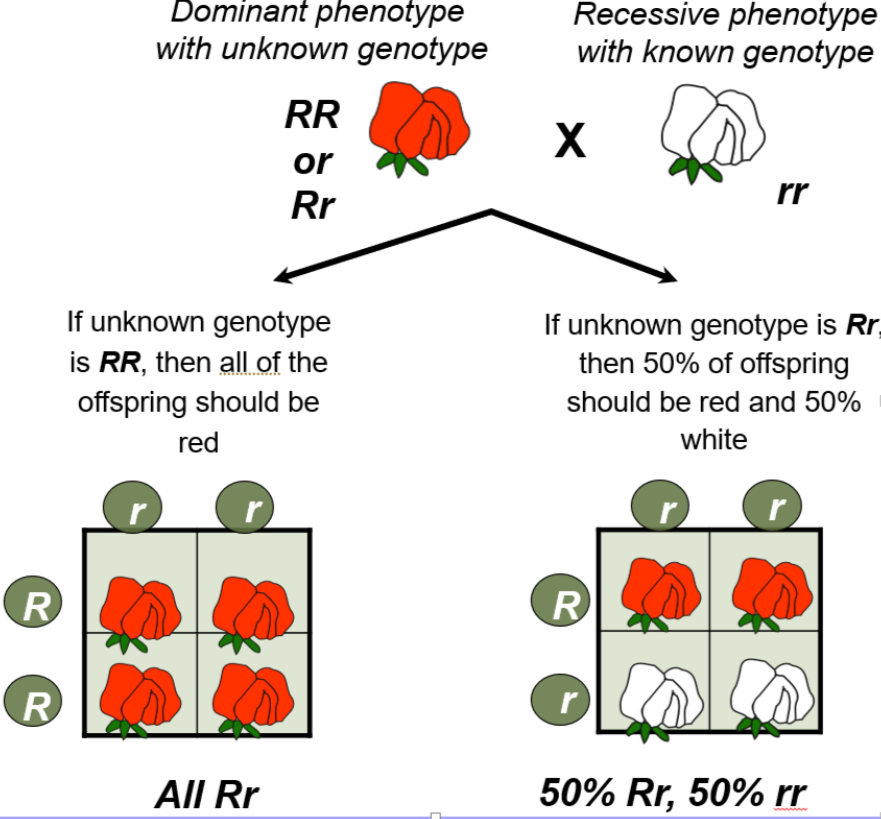
Codominance
Codominant traits are those that have a different pattern for the heterozygote
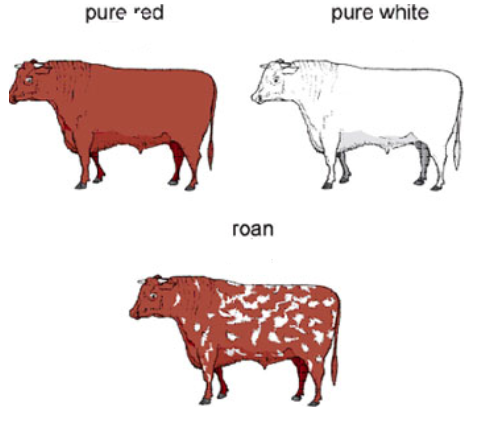
Incomplete dominance
These traits show another pattern in the heterozygote. The heterozygote is a blend of each homozygous parent.
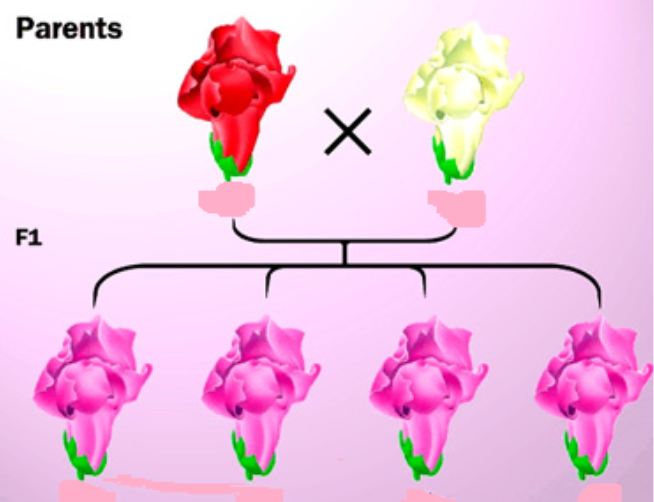
Autosomes and Sex Chromosomes
In humans, there are 23 pairs of chromosomes, of which 22 are named autosomal and have no impact on sex determination. One pair is named the sex chromosome and depending on what combination is present, it will affect the sex of the organism
Traits that are sex linked
When a gene locus (a trait) is found on a X or Y chromosome, the trait is said to be sex linked.
Sex Linkage
Sex linkage refers to the phenotypic expression of an allele that is dependent on the sex of the
individual and is directly tied to the sex chromosomes.Most sex-linked genes are present on the X chromosome (X-linkage) and have no corresponding allele on the smaller male chromosome.
Sex-linked traits show a distinct pattern of inheritance.
Fathers pass X-linked alleles to all their daughters but not to their sons.
Mothers can pass sex-linked alleles to both sons and daughters.
Who determines the gender of offspring in humans?
In humans, as men have an x chromosome and a y chromosome (females have two x chromosomes) half their sperm have an X chromosome and half have a Y.
All the eggs a woman produce have Xs in them – therefore the male controls gender of offspring.
EQUATION for Photosynthesis
6CO2 + 12H2O → C6H12O6 + 6O2 + 6H2O
6CO2 + 6H2O → C6H12O6 + 6O2
Two stages of photosynthesis
Light dependent photosynthesis
Light independent photosynthesis
Light dependent photosynthesis
This process occurs in the grana of the chloroplasts.
H2O is split to produce H+ and O2 molecules.
The O2 is released into the environment (it is a by-product) and the H+ ions are picked up by NADP molecules and transported to the stroma.
2 ATP molecules are also produced which moves to the stroma

Light independent photosynthesis
Occurs in the stroma of the chloroplast.
The energy from the ATP is used to combine CO2 with the H+ ions dropped off by the NADP(H) – this is known as Carbon fixing (and the Calvin cycle). C6H12O6 is produced.
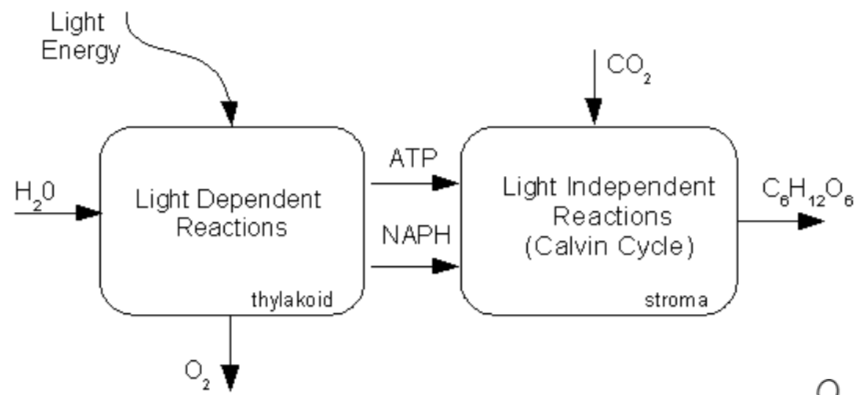
Adaptations
inherited features that an organism has that helps it survive and reproduce in its habitat.
are the result of evolutionary changes that a species has gone through over time.
SPECIES have adaptations and evolve INDIVIDUALS do not. IF an individual has an adaptation it will increase an organisms survival and hence the sepcies.
STRUCTURAL ADAPTATIONS
These are anatomical adaptations that an organism possesses that improve their ability to survive. They are innate (the animal is born with them)
e.g. kangaroos use their tails for balance.
BEHAVIOURAL ADAPTATIONS
These are learned behaviours that an organisms possesses that improves their ability to survive
e.g. if we get hot we might move into a shaded area, so that we don't get dehydrated or heatstroke.
PHYSIOLOGICAL ADAPTATION
These are processes that the organism carries out rather than physical structures
E.g. the female mantis produces a frothy liquid to surround and protect the groups of eggs she lays.
Natural Selection
is a process which leads to the evolution of new species.
Evolution is the change over time of the genetic material (referred to as the gene pool) of a population. So – evolution happens to populations NOT individuals.
Charles Darwin
Charles Darwin was the first to propose the Theory of Evolution by the process of natural Selection.
The process of Natural Selection
There is variety within the population (for a particular trait)
One phenotype has a selective advantage for that trait over other phenotypes.
That better suited phenotype survives and reproduces. The factor in the environment that the organisms survives is known as the selection pressure. The others die out and cannot reproduce.
The next generation has more members who have the better suited phenotype (and the genes for that phenotype)
Types of Evolution
Divergent
This type of evolution leads to many species developed from one ancestral species
Convergent
CONVERGENT EVOLUTION occurs when two or more groups that are not closely related come to resemble each other more and more as time passes. This is usually the result of occupation of similar habitats and the adoption of similar environmental roles.
Convergent Evolution in Mammals
Marsupial and placental mammals have evolved separately to occupy equivalent niches on different continents. They are ecological equivalents.
Allopatric Speciation – a special type of divergent evolution
This occurs when a
A large population of organisms is split into 2 groups
A geographic barrier separates the two groups so they cannot mate (there is no gene flow).
Over time the two groups are subjected to different selection pressures so will evolve into two different species.
If brought back together, the two groups are not able to produce viable fertile offspring. Thus, they are different species.
Fossils
What is a FOSSIL?
The preserved remains or traces of an organism that is no longer living
Usually found in
sedimentary rocks
Organisms have appeared and disappeared, and have changed over time
Extinction of species
Transitional forms reveal links between groups:
Archaeopteryx: between reptiles & birds
Eustheopteron: amphibious fish
Seymouria: reptile-like amphibian
Also, mammal-like reptiles & whales with hind limbs
Reveals ancient climate & environmental conditions
Indicates development of life from simple to complex
Indicates life began in water
Types of Fossils:
1. IMPRINT – thin, soft object (leaf, feather) is buried and sediments later harden
2. MOLD – Buried organism disappears and leaves an empty space
3. CAST – mold filled by minerals (replica of organism)
4. PETRIFICATION – minerals
replace hard parts (bones, teeth, etc.) of organism
5. AMBER – entire organism fossilized in tree sap
6. FROZEN – entire organism frozen in ice
7. TRACE – footprints, trails, etc.
How can fossil age be determined?
Depth of fossils help to determine their age
Lower layers are older than those in upper layers
Why is the fossil record incomplete?
1. Soft tissue rarely preserved
2. Movement of the earth’s crust has obliterated or covered many fossils
3. Fossilization takes place only in certain types of habitats and under favorable conditions
4. Paleontologists have not dug up every place on earth
Humans are mammals
They feed their young milk and have hair as their body covering
Humans are primates. Characteristics include:
Superior intelligence
(often) complex social behaviours
Highly developed problem solving skills.
EVOLUTION
genetic change in a population of organisms over time
4 Types of Evidence that scientists have gathered in support of evolution
Fossils
Comparative Anatomy & Structures
Embryology
Biochemistry (Proteins & DNA)
Comparative Anatomy
Study of anatomical structures to find similarities and differences
HOMOLOGOUS STRUCTURES
parts with similar basic structure (derived from same structures in embryo—same common descent), but may vary in function
ANALOGOUS STRUCTURES
structures that have the same function (may look somewhat alike), but have different structures and DO NOT have a common descent
Example: wings have developed independently in insects, reptiles, birds, and bats
VESTIGAL STRUCTURES
reduced body parts (in comparison to the same complex structure in other organisms) that have little to no function; remnant of an ancestor
Examples:
Human appendix (other mammals
it is necessary to aid in digestion)
Human external ear muscle
(useless, but still there)
Human tailbone (coccyx)
Embryology
Patterns of embryological development can indicate a common ancestry
Fish, birds, mammals & reptiles all have gills; only fish retain theirs
Fish, birds, humans & reptiles all have tails; ALL but humans retain theirs
Biochemical Similarities
Similarity of proteins, RNA & DNA molecules
The more closely related organisms are, the more similar is the biochemical makeup
Indicates common ancestor
Universality of genetic code – supports evolution
Similar chemistry & structure of chromosomes among Eukaryotes
Chlorophyll is the same basic molecule in all photosynthetic organisms
What is cellular respiration?
It is the transformation of energy to a form the cell can use via a series of chemical reactions.
The chemical potential energy stored is converted into the form of ATP. ATP is a more useable energy source.
It occurs in ALL LIVING THINGS ALL OF THE TIME.
cellular respiration

Useful Vocabulary
Oxidation – chemical process of losing electrons
Reduction – chemical process of gaining electrons
Electron carrier – small organic molecules that pick up electrons from one molecule and drop them off with another.
Aerobic respiration
Occurs when oxygen is present
3 stages in aerobic respiration
Glycolysis
Glycolysis occurs in the cytoplasm. The input of the process is glucose.
Glucose is broken down to produce
2 molecules of a compound called pyruvate
2 molecules of ATP
H+ carried on NAD (as NADH)
The Kreb’s cycle
The Kreb’s cycle occurs in the mitochondrial matrix – the liquid part of the mitochondria.
The pyruvate produced in stage 1 moves to the mitochondria and the Kreb’s cycle breaks them down into
More H+ which are carried on NAD (as NADH) and FAD (as FADH2) that move the H+ to the electron transport chain(stage 3).
6 molecules of carbon dioxide and 2 ATP.
Electron transport
Electron transport chain (ETC)
The ETC occurs on proteins molecules called cytochrome C that are embedded in the inner membrane of the mitochondria (called the cristae).
Transfers energy from electrons supplied by loaded coenzymes to make ATP
This process uses oxygen and produces
6 molecules of water (a bi – product) and 26 – 28 molecules of ATP.
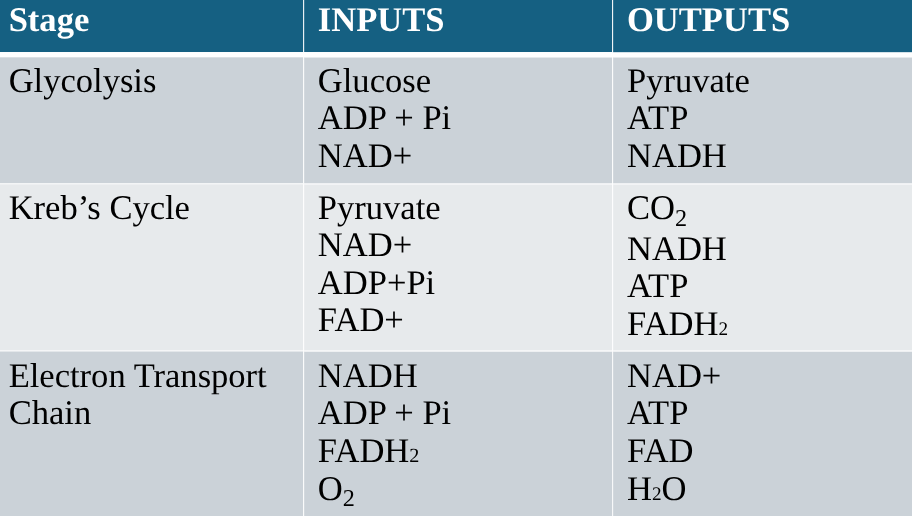
Anaerobic Respiration
Anaerobic respiration occurs when oxygen is not present.
There are 2 stages in this process
Glycolysis
Glycolysis occurs in the cytoplasm. The input of the process is glucose.
Glucose is broken down to produce
2 molecules of a compound called pyruvate
2 molecules of ATP
H+ carried on NAD (as NADH)
Fermentation
Fermentation (like glycolysis) occurs in the cytoplasm of the cell. It is different in plants and animals

Fermentation in animals
Glucose → Lactic acid + 2 ATP
Fermentation in plants, yeast and some bacteria
Glucose →Alcohol + carbon dioxide + 2 ATP
Comparing anaerobic and aerobic respiration
anaerobic (no oxygen) and aerobic respiration (oxygen)
Monomer
Mono means “one”.
So, monomers are those small molecules that can join to make a longer polymer chain.
Usually, a single polymer molecule is made from hundreds of thousands (or even millions) of monomers.
Polymers
Poly – “many”
Polymers are made up of many, many molecules all strung together to form really long chains (and sometimes complicated structures).
Polymers will act differently depending on the kinds of molecules (monomers) they are made up of and how they are put together.
Carbohydrates
Monomer – monosaccharide (simple sugar)
Example: glucose; fructose; maltose
Notice that they all end in –ose
Disaccharides are two monosaccharide bonded together
Example: sucrose
Polymer – polysaccharide (complex sugar)
Example: Cellulose (wood, paper); starch (energy storage in plants); glycogen (energy storage in animals)
Functions: They are used by organisms to make energy and can be stored for later use.
They make up structural components of cells
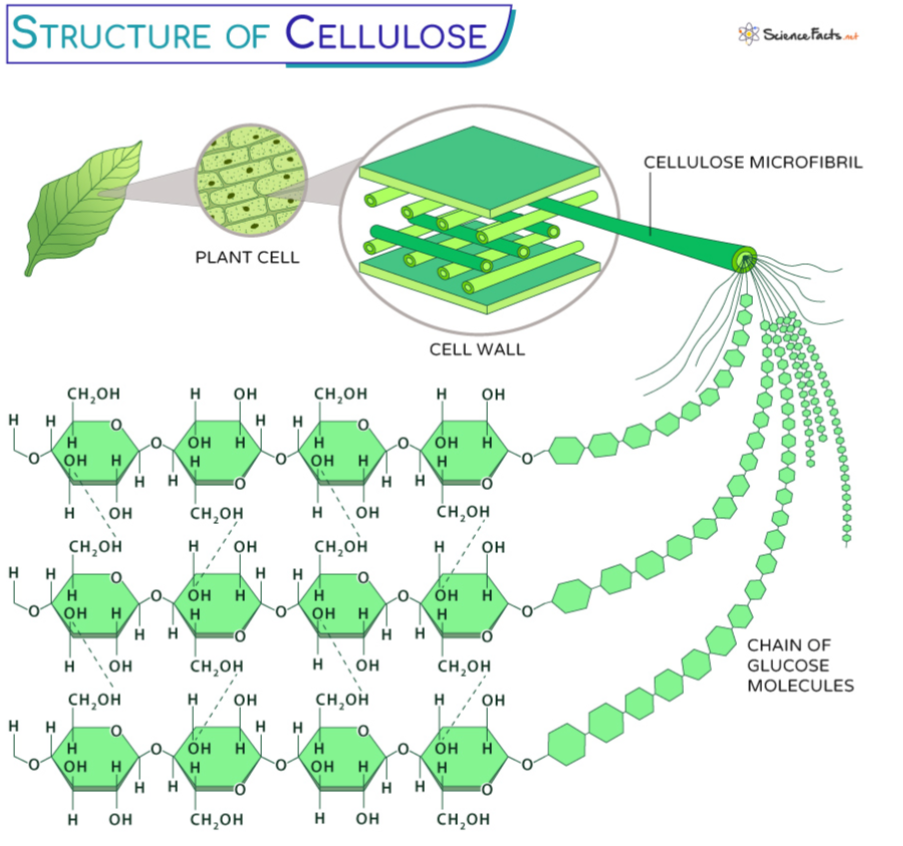
Proteins
Monomer – amino acid
Held together by peptide bonds
Polymer – polypeptide
Example: muscle fibres, keratin (hair).
Protein functions: hormones acting as messengers, enzymes speeding up reactions, cell receptors acting as ‘antennae’, antibodies fighting foreign invaders,membrane channels allowing specific molecules to enter or leave a cell, they make up the muscles for moving, let you grow hair, ligaments and fingernails, let you see (the lens of your eye is pure crystalised protein).
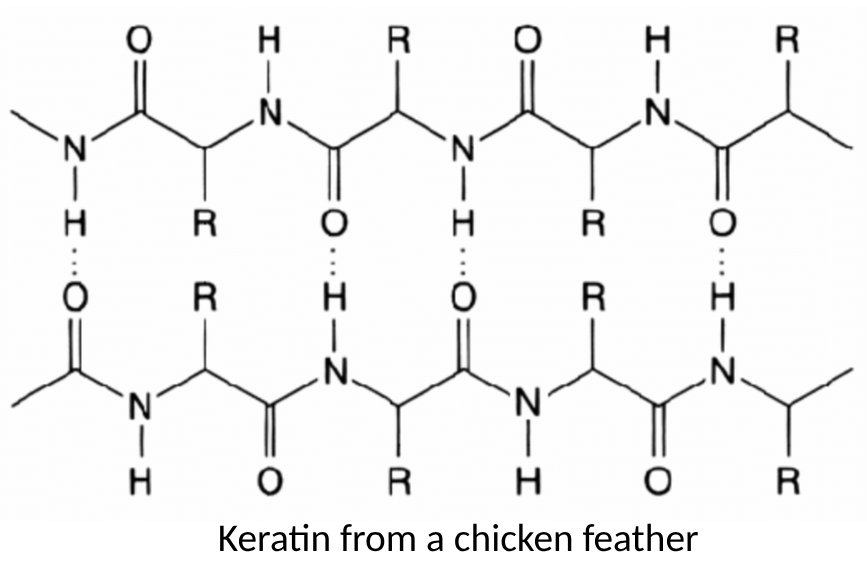
Nucleic Acids
Monomer – nucleotides
Polymer – DNA, RNA
Example: DNA, RNA.
Held together with covalent bonds.

Lipids- Fats, Oils and Waxes
Monomer – glycerol and fatty acids
Polymer – Lipids
Examples: triglycerides, phospholipids, waxes and steroids.
Lipids have several roles:
They are used to create barriers between environments (controlling what enters and exits the cell). Forming the cell membrane (phospholipids).
Storing energy. They are higher energy molecules than carbohydrates.
Transporting messages (steroids)
Lipids can be grouped as mono un – saturated, poly un-saturated or saturated molecules. These categories depend on the number of double bonds between the carbon atoms in the tail.
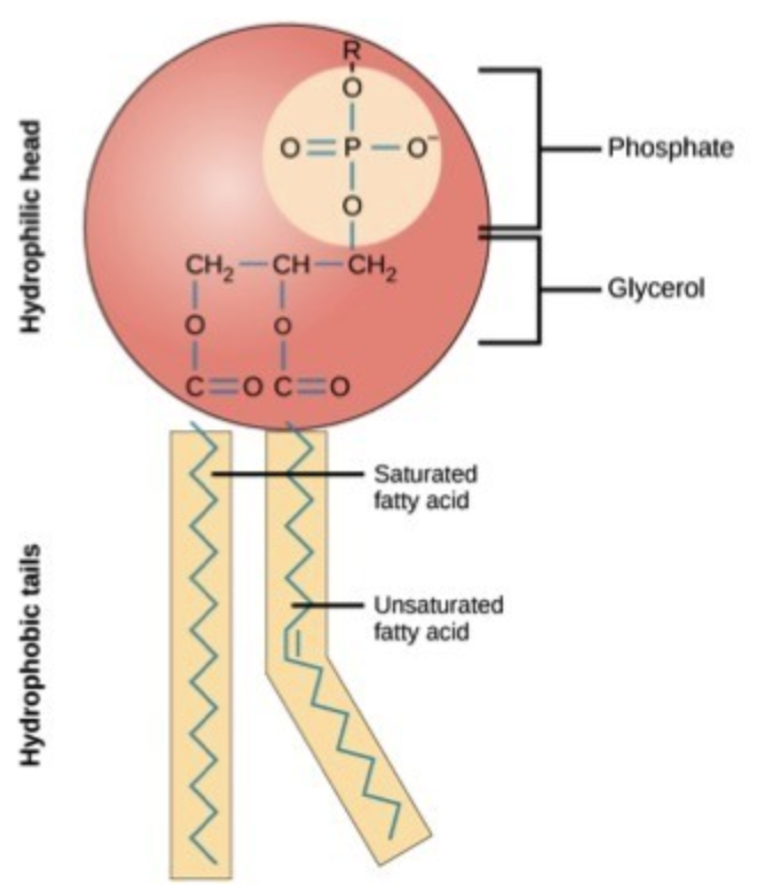
Equation for Photosynthesis
6CO2 + 12H2O → C6H12O6 + 6O2 + 6H2O
6CO2 + 6H2O → C6H12O6 + 6O2
main stages in photosynthesis
Light dependent photosynthesis
Light independent photosynthesis